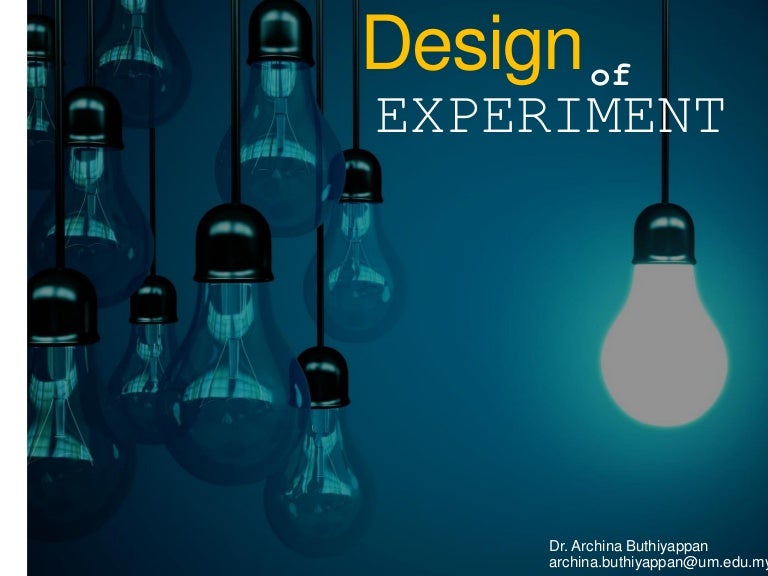14 1 What is experimental design and when should you use it? Doctoral Research Methods in Social Work
Table Of Content

Researcher Michael Birnbaum has argued that the lack of context provided by between-subjects designs is often a bigger problem than the context effects created by within-subjects designs. To demonstrate this, he asked one group of participants to rate how large the number 9 was on a 1-to-10 rating scale and another group to rate how large the number 221 was on the same 1-to-10 rating scale (Birnbaum, 1999). Participants in this between-subjects design gave the number 9 a mean rating of 5.13 and the number 221 a mean rating of 3.10. To fit in with the scientific method, experiments have to be relevant to the questions, hypotheses, observations, analyses, and conclusions of the investigation.
Step 5: Measure your dependent variable

Yet another reason is that even if random assignment does result in a confounding variable and therefore produces misleading results, this is likely to be detected when the experiment is replicated. The upshot is that random assignment to conditions—although not infallible in terms of controlling extraneous variables—is always considered a strength of a research design. The distinction between efficacy and effectiveness demonstrates the tension between internal and external validity. Internal validity refers to the degree to which the intervention causes its intended outcomes, and external validity refers to how well that relationship applies to different groups and circumstances than the experiment.
Doctoral Research Methods in Social Work
A matched pairs design is an experimental design where pairs of participants are matched in terms of key variables, such as age or socioeconomic status. One member of each pair is then placed into the experimental group and the other member into the control group. When discussing the proper settings for your process variables, people often rely on what they have always done, on what Old Joe taught them years ago, or even where they feel the best setting should be. After analyzing all of your main effects and interactions, you will be able to determine what your settings should be for your factors or variables.
Inadequate Literature Study
To allow for easier replication, researchers should describe their experimental methods diligently. Researchers with the Open Science Collaboration (2015)[1] conducted the Reproducibility Project, which caused a significant controversy regarding the validity of psychological studies. The researchers with the project attempted to reproduce the results of 100 experiments published in major psychology journals since 2008.
True-experimental Research Design
Examples of Simple Experiments in Scientific Research - Verywell Mind
Examples of Simple Experiments in Scientific Research.
Posted: Thu, 10 Aug 2023 07:00:00 GMT [source]
This website is using a security service to protect itself from online attacks. There are several actions that could trigger this block including submitting a certain word or phrase, a SQL command or malformed data. The necessity to use randomisation is basically used to make the study more reliable through elimination of any external variables in assignment. The artificial assignment of treatments can skew results in the favour of certain groups.
The treatments must be allocated without any pre-requisite knowledge of the effects that the treatment will have on the group. The main effects of a DOE are the individual factors that have a statistically significant effect on your output. In the common two-level DOE, an effect is measured by subtracting the response value for running at the high level from the response value for running at the low level. DOE statistical outputs will indicate whether your main effects and interactions are statistically significant or not. You will need to understand that so you focus on those variables that have real impact on your process.
Improving reproducibility in animal research by splitting the study population into several 'mini-experiments' Scientific ... - Nature.com
Improving reproducibility in animal research by splitting the study population into several 'mini-experiments' Scientific ....
Posted: Tue, 06 Oct 2020 07:00:00 GMT [source]
Experimental Design in Science Definition, Process & Steps
In true experimental design (discussed in the next section) and quasi-experimental design, researchers accomplish this with a control group or comparison group and the experimental group. Instead they may receive what is known as “treatment as usual” or perhaps no treatment at all. Only when this is done is it possible to certify with high probability that the reason for the differences in the outcome variables are caused by the different conditions.
Statistical results are one of the most trusted scientific evidence. The ultimate goal of a research experiment is to gain valid and sustainable evidence. Therefore, incorrect statistical analysis could affect the quality of any quantitative research. Usually, researchers miss out on checking if their hypothesis is logical to be tested.
Any investigation begins with the formulation of a question or research hypothesis in the context of a particular subject matter area, such as agriculture, medicine, industry, etc. For a given situation the researcher has to identify and characterize the experimental units to be used in the experiment. The experimental units are then subjected to different treatments, which are the objective of the study and about which statistical and... Experimental designs are a set of procedures that you plan in order to examine the relationship between variables that interest you. Within-subjects or repeated measures can also refer to an experimental design where an effect emerges over time, and individual responses are measured over time in order to measure this effect as it emerges.
For example, if you are doing an experiment measuring the fizz released from different types of soda, you might control the size of the container so that all brands of soda would be in 12-oz cans. If you are performing an experiment on the effect of spraying plants with different chemicals, you would try to maintain the same pressure and maybe the same volume when spraying your plants. Since school days’ students perform scientific experiments that provide results that define and prove the laws and theorems in science. These experiments are laid on a strong foundation of experimental research designs. Ability to say that one variable "causes" something to happen to another variable.
In studies that use experimental design, the independent variables are manipulated or controlled by researchers, which enables the testing of the cause-and-effect relationship between the independent and dependent variables. An experimental design can control many threats to internal validity by using random assignment of participants to different treatment/intervention and control/comparison groups. Therefore, it is considered one of the most statistically robust designs in quality-of-life and well-being research, as well as in... As we have discussed, experimental designs can help clear up at least some of this fog by allowing researchers to isolate the effect of interventions on dependent variables by controlling extraneous variables.
With three variables, machine speed, fill speed, and carbonation level, how many different unique combinations would you have to test to explore all the possibilities? Which combination of machine speed, fill speed, and carbonation level will give you the most consistent fill? The experimentation using all possible factor combinations is called a full factorial design. Controlled variables, sometimes called constant variables are variables that are kept constant or unchanging.
Comments
Post a Comment